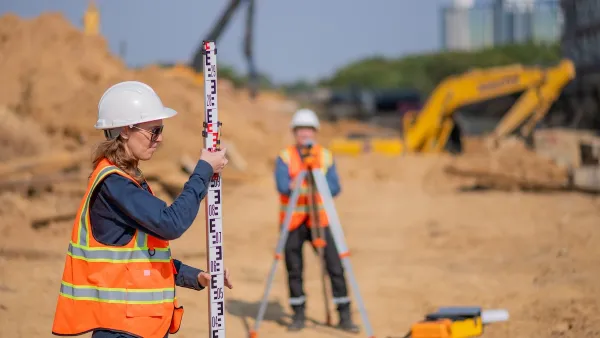How outdated and inefficient city processes can hinder the progress of transportation projects and prevent the development of a comprehensive transportation strategy.

A new National Association of City Transportation Officials (NACTO) report titled Structured for Success assesses the structural and bureaucratic challenges that impede the effective deployment of transportation projects. Jared Brey outlines the report’s findings in Governing.
In the new report, the group defines several typologies of organizational structures, from ‘transportation-focused’ to ‘transportation-diffuse.’ Those typologies help illuminate various challenges in cities that consolidate all transportation-related activities under one department versus those that have people working on transportation issues spread throughout multiple departments.
Brey spoke with Jenny O’Connell, a senior program manager at NACTO, who says the structure of organizations and bureaucratic workflows matters because “A lot of agencies are trying really hard to be responsive to their residents, but the systems that they have in place — challenging procurement processes, difficult contracting processes, administrative red tape — can make it really hard.”
When asked “How do you diagnose a structural problem or a process problem?,” O’Connell mentioned “challenges that come up in similar ways across agencies,” competition among agencies for funding, staffing, and resources, and redundancy across teams as red flags. O’Connell recommends a focus on having a “transportation champion at the head of an agency that deals with all of the transportation functions of a city” that can help coordinate efforts and keep transportation priorities front and center. “Generally what we see is that the agencies that are transportation-focused or transportation-inclusive tend to be able to solve some of those big structural challenges.”
FULL STORY: How Cities Can Solve Transportation Problems and Deliver Better Service

Planetizen Federal Action Tracker
A weekly monitor of how Trump’s orders and actions are impacting planners and planning in America.

Congressman Proposes Bill to Rename DC Metro “Trump Train”
The Make Autorail Great Again Act would withhold federal funding to the system until the Washington Metropolitan Area Transit Authority (WMATA), rebrands as the Washington Metropolitan Authority for Greater Access (WMAGA).

The Simple Legislative Tool Transforming Vacant Downtowns
In California, Michigan and Georgia, an easy win is bringing dollars — and delight — back to city centers.

The States Losing Rural Delivery Rooms at an Alarming Pace
In some states, as few as 9% of rural hospitals still deliver babies. As a result, rising pre-term births, no adequate pre-term care and "harrowing" close calls are a growing reality.

The Small South Asian Republic Going all in on EVs
Thanks to one simple policy change less than five years ago, 65% of new cars in this Himalayan country are now electric.

DC Backpedals on Bike Lane Protection, Swaps Barriers for Paint
Citing aesthetic concerns, the city is removing the concrete barriers and flexposts that once separated Arizona Avenue cyclists from motor vehicles.
Urban Design for Planners 1: Software Tools
This six-course series explores essential urban design concepts using open source software and equips planners with the tools they need to participate fully in the urban design process.
Planning for Universal Design
Learn the tools for implementing Universal Design in planning regulations.
Smith Gee Studio
City of Charlotte
City of Camden Redevelopment Agency
City of Astoria
Transportation Research & Education Center (TREC) at Portland State University
US High Speed Rail Association
City of Camden Redevelopment Agency
Municipality of Princeton (NJ)





























